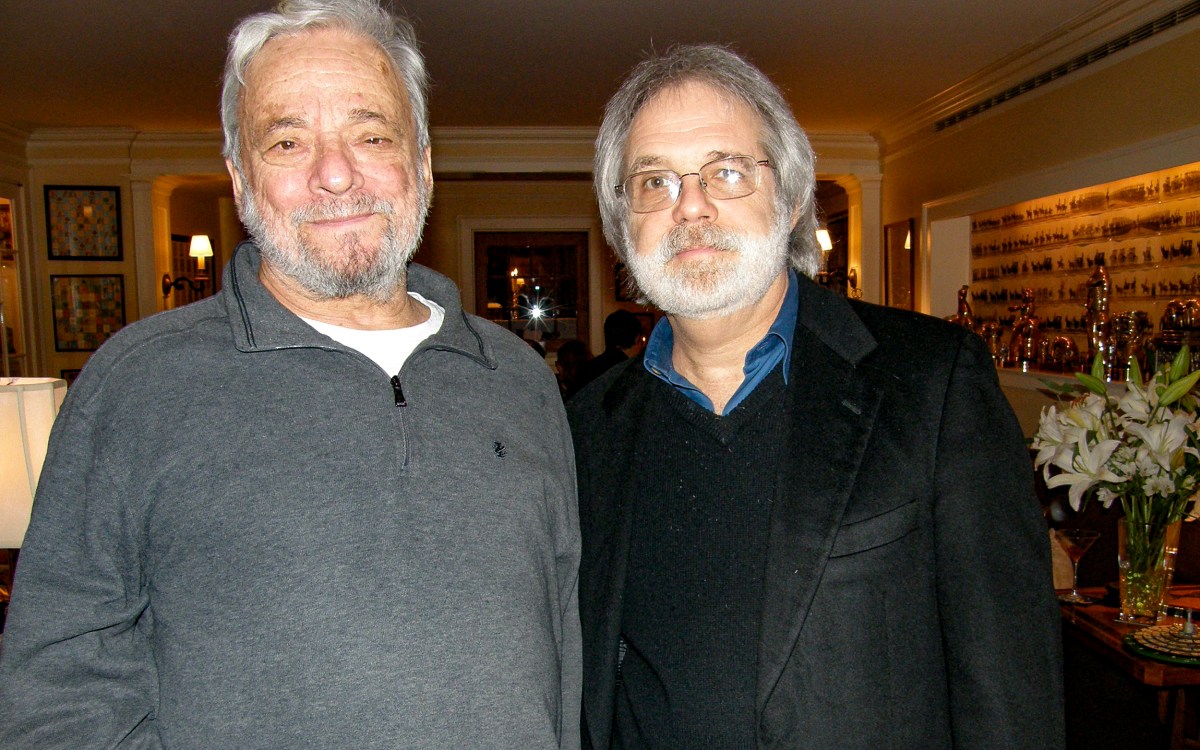Scene-stealing puppets of ‘Pi’
Nick Barnes co-designed critically acclaimed beasts for stage version of novel, now at A.R.T. Yes, he has favorites — they might surprise you.
The theatrical adaptation of “Life of Pi,” Yann Martel’s award-winning novel about a zookeeper’s teenage son stranded on a lifeboat, makes its American premiere at American Repertory Theater this month before heading to Broadway. Previews started Tuesday; opening night is Dec. 15.
Since premiering in England in 2019, the play by Lolita Chakrabarti has won five Olivier Awards. Much praise has been directed at its large-scale animal puppets designed by Nick Barnes, Finn Caldwell, and Caroline Bowman, with more than one critic calling them the stars of the show.
The Gazette talked to Barnes while he was in town recently to lead the puppets’ unpacking and assembling. The interview has been edited for clarity and length.
Q&A
Nick Barnes
GAZETTE: When did your fascination with puppets begin?
BARNES: I was studying drama at a university because I wanted to be an actor, but early on I became interested in set design. I got involved with a production that went to the Edinburgh Festival and was sort of a puppet show. Then I saw two shows: one with Philippe Genty, a French puppeteer, and the other with Julie Taymor. It was a double whammy. Seeing both, retrospectively speaking, was fate. It galvanized my interest in the theater. I took a course with Genty in France and learned some techniques. I made some puppets in his style, but very quickly, evolved into my own style.
Puppets, for me, as a creative person, combine theater, art, and craft, and provide a theatrical intensity. I find them fascinating to watch on stage and to engage in that imaginative leap that you ask an audience member to take when you perform with a puppet. They draw you in and you start to become intrigued by their movements and try to decipher what they represent.
GAZETTE: Some reviews said the puppets are the stars of “Life of Pi.” How does that make you feel?
BARNES: It’s flattering when someone writes something pleasing in that way, but it goes without saying that the puppets wouldn’t exist in front of the audience without the contribution of the puppeteer, or actor, and their skill. I use the word actor to refer to puppet performers because a lot of good puppeteers are first and foremost good actors, and it’s a real skill to be able to convey the emotions and the thoughts of the character through this object. There is a synthesis; you must have someone who can get behind the character and understand the movement or the energy of the movement, or all those things.
GAZETTE: What kinds of animals are depicted in “Life of Pi”? What are they made of?
BARNES: There are two tigers, two hyenas, two orangutans, two zebras, and two sea turtles. You won’t see all of them, or if you do, you won’t know that you’ve seen them. There are also numerous butterflies, fish, rats, a goat, and a baby orangutan.
A lot of the puppet-making that I’ve done in the past has involved sculpting, carving, or taking molds, which you can reproduce relatively easily. The challenge with these puppets is that they can’t be molded, and because of the size, we have to use a lightweight material (plastozote.) It took us five months of solid making and a team of eight to 12 makers.
Also, the challenge is two-sided. You’ve got this constant challenge to balance weight and strain, particularly on puppets of this scale. I’m constantly trying to think of ways to keep the puppets connected and allow them to have the range of movement that they need without becoming restricted. The other challenge is more creative. You’re creating a sculpture, but it’s a static image brought to life because it moves. We put mechanisms in them to allow them to have simple movements; most of them have an opening mouth, but not eyes. The challenge is figuring out what you’re trying to capture of that character in one image that’s going to sustain the whole show and is going to allow the audience to go on that character’s emotional journey.
GAZETTE: Can you talk about the star of the show: the Bengal tiger, and the other animal puppets?
BARNES: Richard Parker, the tiger, is such fun to look at. To make him, it takes 20-25 weeks if one person were making him, but often there is more than one.
Many people like the sea turtle, and I can see why. I would be tempted to say my favorite puppets are the fish, but it would be churlish not to say it is Richard Parker.
All animal puppets in the show are based on driftwood; they come together either as a real object or in Pi’s imagination as these driftwood, sculptural animals. With the fish, we tried to use driftwood at the beginning, but they came out in weird, contorted shapes and they didn’t look terribly attractive. This concept is far more successful when you’ve got an animal with limbs and more parts because you could put them together as if they are 3D jigsaws pieces. We were wracking our brains, and we were doing the first show in Sheffield, and I got some fabric, and we started playing around, and they were magical. The fish came alive, and I was chuffed that we came up with these rather beautiful fish. Every time I see them come on stage, I do get a little tingle of pleasure.
GAZETTE: What are your views on the future of puppetry as an art form?
BARNES: I would hope that audiences are becoming more familiar with contemporary theater puppetry. We’ve borrowed from the past to get where we are. We’re taking puppets, which have existed for many years, and try to make them speak in a more theatrical form. When you see them on stage, our puppets don’t have a special booth and sometimes they are large-scale and life-size. I hope that the form will continue to evolve so that people understand puppetry as a language and it can continue to expand storytelling in theater and it becomes part of people’s range of storytelling tools. But that is going to involve a lot of training and understanding the budgets for making and hiring puppeteers and all those sorts of things.
GAZETTE: What do you hope the audience can take away from the show?
BARNES: They’re in for a real treat. It’s a beautiful story, touching and moving. I get a shiver every time I see it, and I’ve seen it a lot. What’s amazing about the show is the way all the elements work together so well. It’s not only the puppets, because they would look very diminished if they weren’t supported by the beautiful set, the lighting, the music and the sound design, and the performances of the actors. It is a real ensemble piece, and I don’t just mean the ensemble of the people you see on stage. As a company, it’s an ensemble piece. Hopefully, people will come along and have a magical evening and find faith in theater and live storytelling.
“Life of Pi” runs at American Repertory Theater’s Loeb Drama Center through Jan. 29.







